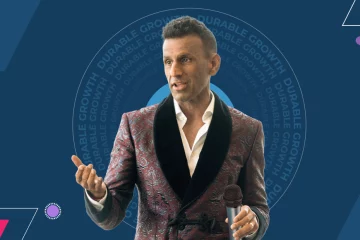
Imagine gathering Customer Success executives together and having them open up about pain points, processes, and the future of CS. Recently, I did, and inevitably, one topic and the incessant accompanying question arose, which is:
How do we measure the ROI of our Customer Success team?
In a happy hour earlier this month, we dove into this rabbit hole. The discussion brought up the natural corollary subject that no one ever asks or talks about:
How do we measure the ROI of our Sales team?
This question led me to a thought experiment.
Breaking through the Matrix and returning to our universe, I shared with the group of execs that the question most boards, CEOs, and CFOs are asking when they investigate the “ROI of Customer Success” is, “What would happen if we had no CSMs?” Shock and horror! This question is an example of a counterfactual—asking about a possible world different from the one we are in. Counterfactuals are, by definition, impossible to answer with 100% confidence since you never know “what would have happened” with an alternate decision.
As a group, we decided to lean into the challenge and speculate about the heretical, a world without CSMs.
1. Logo Churn Would Go Up
Did I hear everyone say, “Duh?” This statement is an obvious one. And we all know this is the truth. As our first Chief Customer Officer and author of the Customer Success book, Dan Steinman, said years ago, “The natural tendency of customers is toward churn.” In many product categories, the technology doesn’t always drive value on its own. Clients need help; in adoption and mapping to business outcomes. It is particularly true when stakeholders at the client change.
Many of us have run “accidental experiments” to prove this impact. A CSM leaves, and there is no near-term backfill. Due to budgets, we decide not to cover a segment of clients. We all know the outcome of the experiment. Intuitively, a world without CSMs would have higher logo churn.
2. Dollar Churn Would Go Up
Over time, technology categories get commoditized. Alternatives emerge. Gaps between competitors shrink. To clients, all products look similar. Vendors try to stave this off through R&D, innovating to maintain differentiation.
If, however, clients don’t see and use this differentiated new functionality, it’s not worth anything. Without a CSM’s attention, clients will naturally stop using new capabilities. Customers will wonder why they are using an expensive product when the cheaper alternative accomplishes everything they need. Vendors would then have to discount renewals and cut prices to maintain their client base. As a result, dollar churn would go up even more than logo churn without the presence of CSMs.
3. Customers Wouldn’t Expand Nearly As Fast
As one of the happy hour participants succinctly stated, “happy customers buy more. Unhappy customers don’t tend to buy.” While Sales usually drive upsells and cross-sells, you have to “earn the right to expand” by delivering value with the existing contract. Some types of expansion are truly net new sales, e.g., selling to a completely different company division. But often, adding licenses and upgrading packages come naturally from driving adoption and outcomes. Take CSMs away, and Net Retention Rates will slow.
4. Reps Would Have Less Time for New Logos
A more subtle point one person brought up is that Customer Success teams have helped to shield reps from work that might distract them from their primary job of finding new clients for the company. Without CSMs, much of the burden of responding to client needs would naturally fall on sales professionals. Many companies have seen that one of the significant benefits of Customer Success is improving sales productivity.
5. Customer Acquisition Cost Would Go Up Due to Less Advocacy
In a world without CSMs, clients would receive less value. Additionally, vendors would have less visibility into the value clients are receiving. The combination of these two factors means that companies would have fewer advocates. These advocates are the grease that accelerates sales cycles. If prospects have a plethora of companies to talk to and understand the experience with a vendor, they can make a decision more quickly. One of the best ways to hurt your CAC is to take away your advocates.
6. Products Would Atrophy
The biggest opportunity for Customer Success teams is to help make the product better aligned to client needs. Product teams have always received an infinite list of the “what” in terms of client needs, such as feature requests or bugs. What is challenging is to understand the “why” behind the problems the clients are trying to solve. CSMs provide critical insights to Product teams to help them prioritize what initiatives matter to client outcomes and smooth out the rough edges that block the path to value. Without CSMs, Products would suffer.
7. The Market Would Pass You By
The bottom line is that the water is constantly rising in technology. If you stay where you are at, you get submerged. The only way to find the higher ground is to continually work to innovate and make your solution more sticky. So how do you make that stickiness happen? Fundamentally, the CSM’s job is to get the client to the point where they have found value in your product, made your solution a core part of their business, and can’t live without it.
Luckily, we will never have to know a world without CSMs or what that would entail. The unstoppable momentum of Customer Success is that it is becoming a standard part of the playbook in the software industry. But this thought experiment is quite revealing, showing us how much of an impact Customer Success is having on every aspect of a company’s business. The question is, would you and your company be willing to live without CS now that you know it’s true value?





